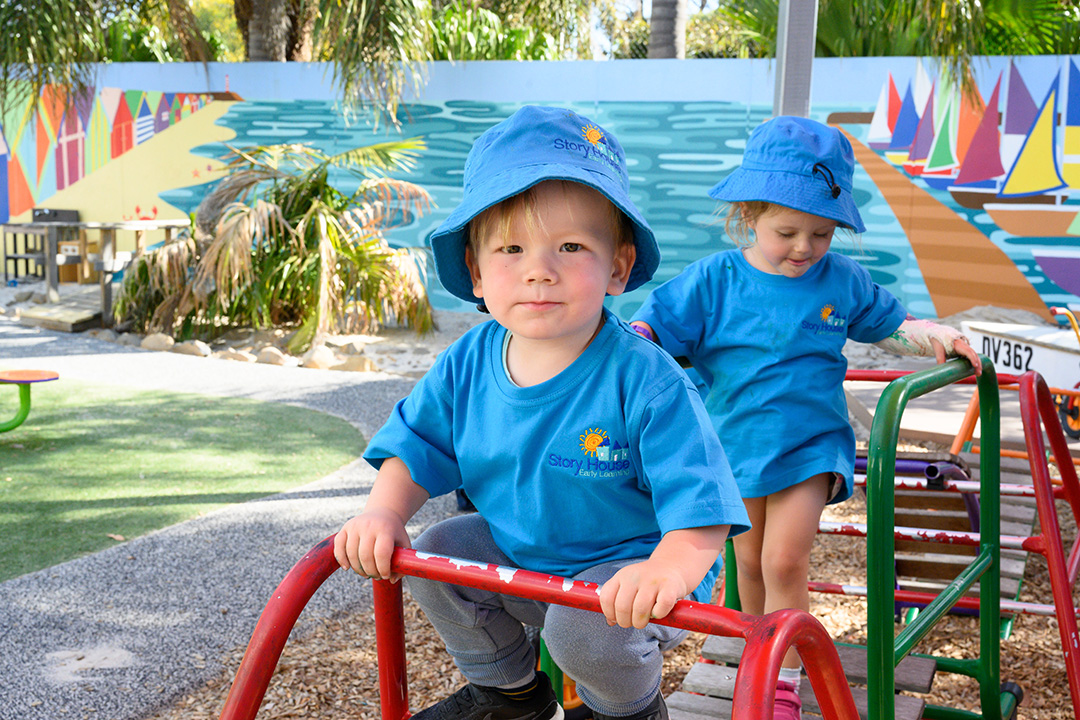Did you know that when a butterfly is coming out of its chrysalis, it’s the seemingly immense struggle it goes through that strengthens its wings? Without intending harm, people have attempted to help butterflies leave their chrysalis in the past. To much dismay, they discover that without the independent struggle, the butterfly’s wings couldn’t develop the necessary strength to fly and so will not survive the wild on its own.
It’s the same with our little ones.
While it’s instinctual to want to remove any obstacles when we see our children encountering difficulties – in doing so, we’ve inadvertently weakened their wings. To flourish into beings with good self esteem, emotional regulation skills, healthy impulse control, and strong capabilities to handle future challenges, children need to develop resilience.
To foster resilience, children must be encouraged to nurture their curiosity by playing and exploring in safe environments. When a little one grasps for an object just out of reach, they’re stretching their limbs, strengthening their muscles, building their hand-eye coordination and developing inner strength.
Of course, there’s always the chance the child may fall. Yet, it’s precisely by falling down and picking themselves back up that they can develop their ability to walk. It’s an appropriate analogy for everyday life. We all encounter stressful times and it’s by using our resilience skills to pick ourselves back up and overcoming these hurdles that we’re able to live life to the fullest. It’s only natural to want the same for our children.
What is resilience and why it's important?
Resilience is the ability to handle and overcome adversity, stress, emotional pain, and the tough times like failures, challenges and even traumas. Resilience is not an individual characteristic that children either do or don’t have. Rather resilience in children is learnt, developed and nurtured during their younger years.
One simple truth of life is this, it’s not possible to avoid stress and adversity. Children cannot be shielded from this truth either. They may encounter stressful situations such as moving homes, starting a new school, separation of parents, bullying or coping with grief. Encouraging resilience in children helps them to navigate any adverse childhood experiences they may face.
What’s more, resilient children tend to understand their limitations better and fear failing less. So a resilient child is more likely to take healthy risks, be more curious, better manage strong emotions and independently use problem solving skills.
So it’s important that we teach resilience in children so they can develop the self-confidence and emotional skills they need to flourish.
How can resilience be developed?
There are numerous ways to develop resilience in children.
1. Nurturing meaningful emotional connections
A vital tool to develop a child’s resilience is teaching them the importance of meaningfully connecting with others. This involves fostering a child’s ability to empathise, actively listen and label emotions. The connection with others is a source of social support which promotes a child’s resilience and encourages their mental health hygiene. To nurture emotional connections, children need to experience unconditional support and love when they spend time with their primary caregivers. This means quality and positive one-on-one time (so no smartphones!). Through positive emotional connections and a healthy sense of attachment, children build resilience.
2. Building independence
Building independence is the most natural and effective way to promote resilience in children. The goal here is not to foster self-reliance but rather to encourage curiosity, exploration and problem solving skills. It’s a natural tendency for children to want to try things by themselves, and in the process they may get it wrong and become frustrated (ever seen a little one try to button up their coat?). Although it’s important for children to know they have help if they need it, it’s important that they’re given the room to cultivate their abilities to express and process their own emotions (especially the uncomfortable ones like frustration).
While it may feel natural to want to solve all their problems, it’s important to let children find their way in their own time. Be patient with them, let them be messy and allow them to fail. And when a child comes to you with a problem, instead of explaining or lecturing straightaway, the best strategy is to ask questions. When you bounce questions back to the little ones, the child is given the opportunity to independently problem solve, which in turn will allow them to build independence and develop resilience.
3. Playing and exploring
Children have the natural tendencies to want to satisfy their curiosity by playing and exploring their surroundings. During their different stages of growing up, children need to have ample opportunities to practise independent decision-making such as choosing friends, games and adventures that they choose to push themselves out of their comfort zones. Children build important social and emotional competencies such as learning to negotiate, communicate their emotional needs, empathise and problem solve when they can freely explore their playful interactions with other children. So to build resilience and to flourish, our children need to be given the space to explore their entire range of emotions and to play freely in the playground of life.
4. Encourage healthy risk taking
In a world of helicopter parenting style and safe, cushiony playgrounds, children develop resilience by taking healthy risks. Quite simply, a healthy risk is a situation where a child is stepping outside their comfort zone but without any risks of real harm. Some examples include participating in a new sport, approaching a new child or entering a school performance. When children embrace healthy risks, they become more confident. And when they feel confident, they’re internalising the message that they’re strong and capable enough to handle any challenges, which is a healthy way of building a child’s resilience.
5. Nurture an optimistic outlook on life
Resilience and optimism go hand-in-hand. It’s important to teach your children to look at any painful events in a broader context with a long-term perspective in mind. They need to understand that embracing failure is an important step to learning and growing so that they can better handle future challenges. Parents that overly focus on the end results tend to have children that are caught up in the pass and fail cycle, which leads to them avoiding any risk of failure. This is counterproductive in helping a child build resilience. Instead they should be encouraged to do their best and to understand how their individual accomplishments also contribute to the overall wellbeing of their peers in class (which will translate to society when they flourish into resilient young people).

Overall, the best way to teach a child resilience skills is to model resilience. To always do your best to label your emotions, demonstrate coping skills (like deep breathing exercises), embracing mistakes (yours and theirs) and nurturing an optimistic, positive outlook on life so they can grow to be independent, confident and resilient children.
At Story House Early Learning Child Care Centres, we emphasise the importance of building resilience in children by nurturing supportive relationships with our passionate early childhood educators and providing play-based learning programs in an environment where happiness comes first. So, if you’re looking for a child care centre that will nurture, guide and inspire your children, then contact us and we’ll be happy to help.


